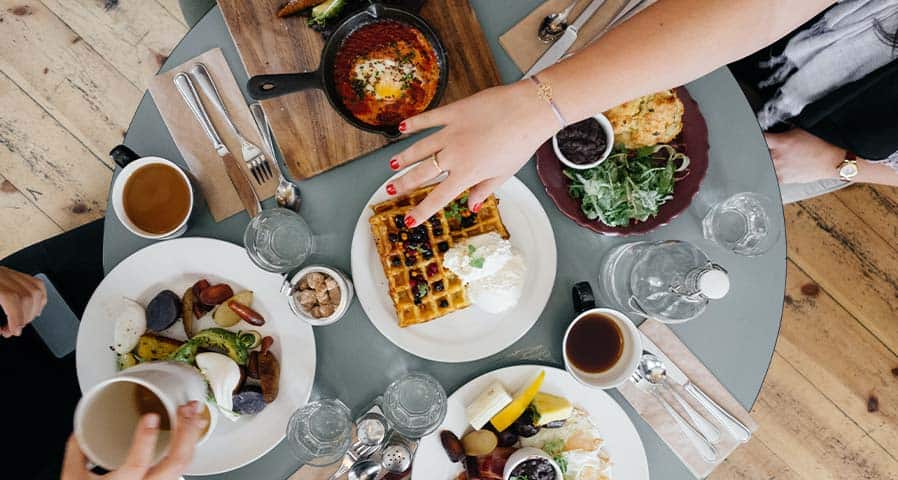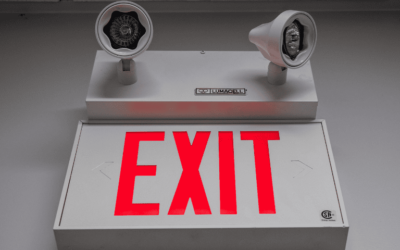When you are ready to improve your restaurant’s lighting, you want to consider the type and layout of your establishment. You should also consider your customers’ preferences.
Here are some tips for improving restaurant lighting.
Consider The Type of Restaurant and Customers
Before you start installing new lighting, consider the type of restaurant and your customers. Fast-food restaurants are vastly different than family-style and fine-dining establishments.
Fast-food restaurants are fast-paced and rely on simple practices to keep orders quickly moving along. A simple lighting design typically works best in this type of environment. This also applies to high-energy family restaurants. Don’t forget to ensure the lights are bright to match the energetic atmosphere. Along with using natural light sources, bright ceiling lamps are another great option.
Fine-dining restaurants have a more subdued atmosphere which often means using more complex lighting. You want to create a warm and welcoming atmosphere that encourages guests to linger over their meals.
If your organization is a fast-food or quick serve restaurant we suggest reading, Common Lighting and LED Retrofits for Quick Serve Restaurants. We cover the most common LED retrofit types for quick serve restaurants and so much more.
Restaurant Layout and Lighting
To improve restaurant lighting, it’s a good idea to look at the layout. The same type of lighting doesn’t always work in all areas. For example, kitchen lighting will probably be brighter than in the dining rooms of luxury restaurants.
Entrance and Façade Lighting
The building’s façade is the first thing customers see and it’s often the image that appears on social media sites. The entrance and façade lighting should reflect the style and type of your restaurant. You also want the lighting, including the signage, to draw people inside.
Kitchen Lighting
Cool, white lighting is often the best choice for kitchen lighting. The lighting helps staff work comfortably and safely, while also improving efficiency and focus.
You may also want to consider installing lighting at specific work points. For example, in the prep area. Using white lighting throughout the kitchen also makes the natural color of the food easily visible. This can lead to more appealing plates.
In the area between the kitchen and dining, go with transitional lighting to help staff adjust to the difference in brightness levels and avoid creating glare.
Service Area Lighting
Service areas include spaces for reading orders, operating cash registers/POS, mixing cocktails, etc. To help staff easily distinguish colors, lighting with a high color temperature typically works best in these areas.
To avoid interfering with lighting in other spaces, try using concentrated lighting. Combining it with LED technology gives you control over the light’s brightness, so the area isn’t over-illuminated.
Bar Lighting
Bar lighting should serve two purposes. You want the light to create an inviting atmosphere while also being bright enough for the bartender to mix cocktails.
Spotlighting using pendant lamps combined with linear lighting can frame the bar area and highlight different items like liquor shelves and drink counters. LED strip lighting can also showcase specific areas. You can attach the LED strips underneath the bar counter and on shelves. Best of all, LED strips are available in different colors which can add to the ambience you are trying to create.
Dining Room Lighting
The dining room lighting allows for plenty of creativity, and it should also reflect the restaurant’s image.
Most guests prefer more subdued light that encourages quiet conversations. In smaller restaurants, the light from the service and bar areas is often enough to adequately illuminate the dining room.
Larger restaurants may want to consider installing fixtures with transparent screens. This will provide enough illumination without being too bright.
Table Lighting
Pendant fixtures are a good choice for table lighting. However, you want to avoid creating glare. A good tip is to install the lighting at least 60 cm above the table. The lamp should also point the light downward.
Translucent shades on the lamps will diffuse the light and create an intimate atmosphere for diners.
Don’t forget to match the pendant lamp’s size to the table. For example, a pendant luminaire with a large drum or cylinder shade is a good choice for square and round tables.
You can also use linear or spotlighting.
Using Lighting for Design Elements
Examples of design elements include architectural elements, lettering, displays, staircases, walls, framed pictures, paintings, signs, bottle racks, cornices, and false ceilings.
Installing accent lighting can illuminate a specific object or work area. The light is visually appealing and versatile, you can also combine accent lighting with ambient light fixtures.
Terrance and Outdoor Lighting
The outdoor area or terrace should also reflect the style and aesthetics of the restaurant, so lighting also plays an essential role. A good rule to follow is to match the outdoor and interior light fixtures. This helps to create a cohesive aesthetic.
For example, Hanging or decorative lamps create a welcoming environment for pergolas. Linear LED lights are a great choice for umbrella tables. Adding diffuses helps to tune the light to match the surroundings.
Match Your Lighting to the Time of Day
Your restaurant’s lighting needs will change throughout the day. The type of establishment can also determine the lighting’s brightness. For example, a bakery will probably need brighter light than a fine dining restaurant.
Restaurants that serve breakfast, lunch, and dinner will want to adjust their lighting to match the time of day.
- Bright lighting works best for breakfast. Customers are waking up, checking their phones, and reading the paper while enjoying breakfast and a hot cup of coffee.
- Subtle, moderate lighting is typically preferred for lunch. However, establishments focused on getting customers in and out the doors quickly, may want to stick with bright lighting.
- During dinnertime, customers prefer a more relaxed atmosphere and this includes dimmer lighting. Installing LED dimming controls is an easy and effective way to create the ideal dining atmosphere at any type of restaurant.
Use Lighting to Enhance the Food
The food is the star of your restaurant, and you want to show it off. Lighting can affect color so consider this during your retrofit or new install. Look for fixtures with a high color-rendering index, it ranges from 0 to 100. A higher color-rendering index helps ensure your food always looks its best. The colors are natural and more accurate.
Did you know the color index can affect the way your food looks? And color rendering index R9 is critical to restaurants specifically due to how it makes meat look. To learn more read, What is Color Rendering Index R9?
Reduce Costs with Intelligent Lighting
LED technology is continuing to advance and includes smart systems. You can automate your lighting system which translates to savings on your energy bills. Even the restaurant’s blinds can come with smart technology. Automatically raising and lowering according to the ambient light outside.
These systems are also easy to control from an app or the restaurant’s control panel.
Don’t stop with intelligent lighting, you can automate other systems like your fans, thermostats, music, televisions, and security systems.
Improve Restaurant Lighting with These Types of Fixtures
Here’s a quick look at some of the popular types of lighting used in restaurants.
- Pendant lights hang from the ceiling and can be placed above bars, tables, islands, counters, and reception areas. They provide pleasant yet safe and suitable light for staff and customers when they need to read menus, for example.
- Chandeliers hang from the ceiling and create a focal point in the entrance area or dining room. Provide a light and elegant style.
- Ceiling fans provide both light and air circulation. Ideal for covered outdoor terraces.
- Wall sconces provide accent lighting. Placed on walls around pictures or photographs. Often used in bathrooms as vanity lights.
- Track lighting allows you to attach several lights to a continuous track, ceiling, or beam and adjust to direct light in different directions and create focal points.
- LED lighting is ideal for restaurants and bars that are not looking for accent pieces or decorative lights. They are directional, so concentrate the light on a specific area. They are also more energy efficient than other options, which translates into lower electricity bills.
- Recessed lighting installed in ceilings or walls, this type of luminaire sends narrow beams of light downwards. They are used for ambient or work area lighting.
- Functional lighting is best suited for purpose-built rooms such as kitchens, dish rooms, and storage areas.
Are you ready to improve your restaurant’s lighting? Contact Action Service Group today to learn more about restaurant lighting and create a design that is perfect for your dining establishment. Call us at 610-558-9773, email [email protected], or schedule a call.








































0 Comments